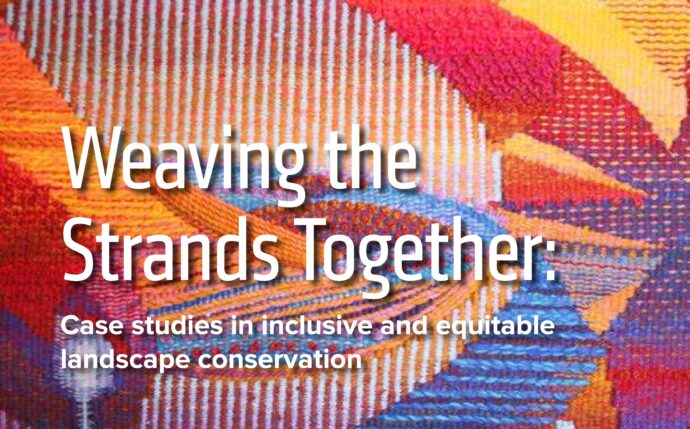
Weaving the Strands Together: Case studies in inclusive and equitable landscape conservation
The purpose of this report is to illustrate how values of diversity, equity, and inclusion have strengthened landscape conservation projects across the United States. Additional resources for the landscape conservation community are provided to assist others in the process of integrating diversity, inclusion, and equity principles into their work. This report is a joint project of the Network for Landscape Conservation, the Salazar Center for North American Conservation, and the Center for Large Landscape Conservation, in cooperation with the four initiatives profiled herein.
The Network for Landscape Conservation and the Salazar Center for North American Conservation have teamed up to showcase four case studies that explore how principles of equity and inclusion can operate within and improve landscape conservation initiatives. The Bears Ears National Monument case study captures Indigenous connection to a culturally and spiritually invaluable landscape in the western United States. The Klamath River watershed in the Pacific Northwest is home to what used to be the Pacific Coast’s third-largest salmon run, and the removal of four dams on the river lies at the heart of reconnecting tribes to their cultural and spiritual heritage. The Kankakee Sands in Northeastern Illinois is home to the world’s largest remaining stand of black oak savanna and Black families who have stewarded this fragmented landscape for generations. Lastly, the Baltimore Wilderness case study tells a story of how urban conservation unfolds within a diverse city
